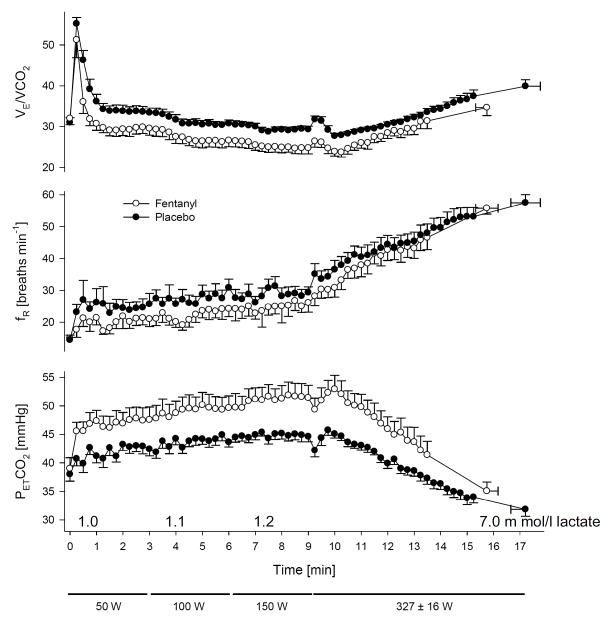Figure 3.
Reduced steady-state ventilation (V̇E/V̇CO2) and breathing frequency (fR), and the resultant CO2 retention, resulting from type III–IV muscle afferent blockade via intrathecal fentanyl in healthy humans at mild to heavy exercise intensities. Fentanyl had no effect on mean SaO2 except at the 327 W work rate where SaO2 was 97.7% in placebo and 95% with fentanyl. Note the persistence of the hypoventilatory response in the presence of type III–IV afferent blockade – especially during mild and moderate intensity exercise – despite the presence of increased CO2-induced chemoreceptor stimulation. Plasma lactate levels were within 0.5 mmol l−1 of resting values (0.9 ± 0.1 mmol l−1) during 50–150 W exercise and rose to 7-fold > rest during exercise at 325 W in both the placebo and fentanyl trials. Data from Amann et al. [3].

